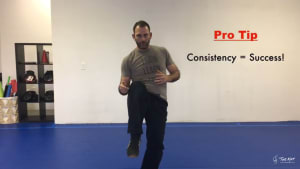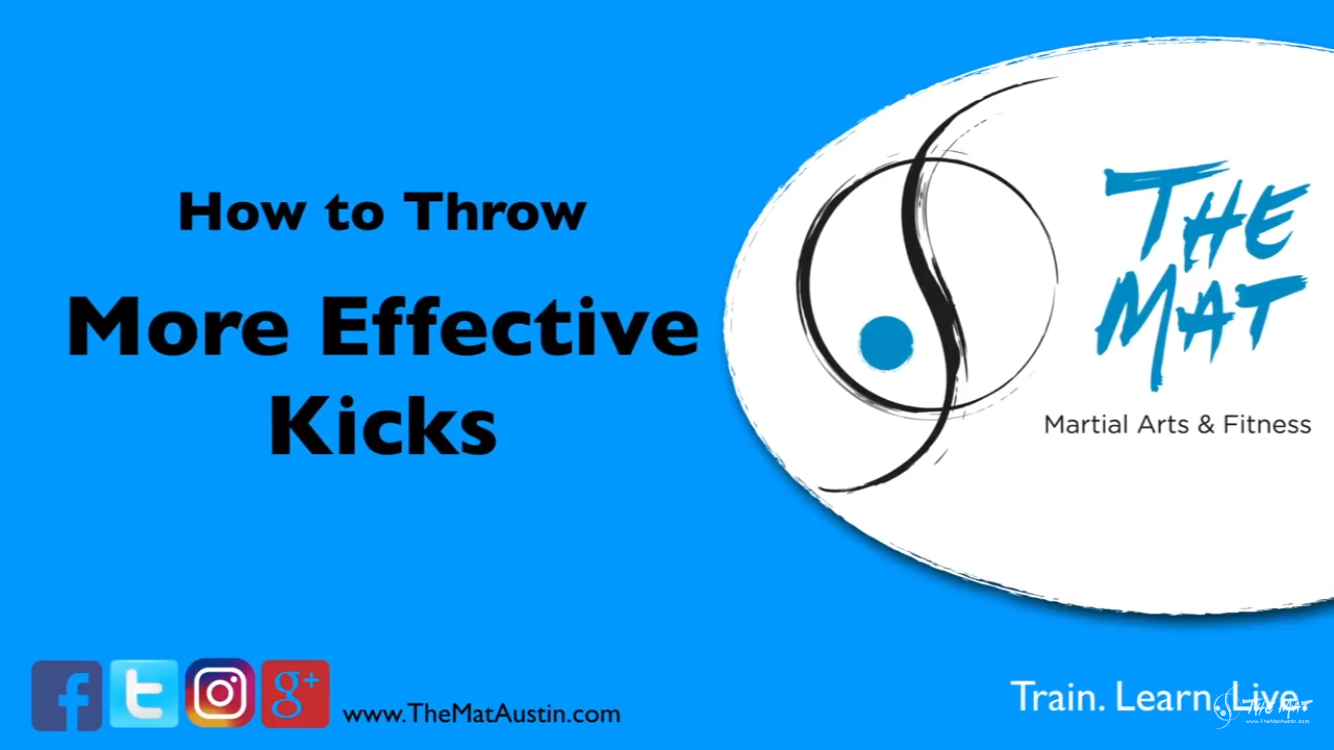
Throw More Effective Kicks Check out the YouTube video here, and read a breakdown of the lesson in written form below. Yes, sort of. Size does matter...at least sometimes. Strength, timing and accuracy, among other factors, will always play their parts towards success in martial arts training. Without the benefits of strength through size, you must be proficient enough in technique to realize effectiveness. A common misconception, particularly in the martial arts, that I have come across many times in my thirty-plus years training and teaching is that size equals strength. While being big undoubtedly often translates to being strong, being small doesn’t necessarily being mean weak. While certainly connected in some truth, the two are not mutually exclusive to one another. A smaller person can still generate a wealth of power when the technique is well executed. If a smaller body can learn to maximize its potential power with technical adjustments, how does that not also hold true for a larger body? Regardless of size, there’s no arguing good technique improves power and accuracy for anyone. The key to realizing effective “power”, as mentioned above, is proper technique. Without technique power can be erratic, inefficient, and ineffective. A very common occurrence where technique can make or break a skill’s effectiveness is in kicking. Kicks utilize the largest muscle groups in the body. They can provide an immense amount of power because of their length, the trajectory in which they’re thrown, and simply because of the shear mass of most people’s legs compared to other parts of their bodies. Kicking has its downsides as well. To name a few, accuracy, or targeting, takes time to hone because of the above listed benefits require practice. When you kick, you’re on one leg so you lose a significant amount of stability and mobility. Simply put, you need to be good at kicking if you’re going to have any beneficial effects...otherwise, keep two feet on the ground and get good at moving and striking with your upper body. But what if you want to get good, or better, at kicking? What if you’re interested in improving or expanding your martial arts tool kit so that you have the ability to choose the most effective tool for each scenario? If this is the case, give yourself five minutes a day and a little bit of persistence and you’ll be ready in two shakes of a karateka’s leg! (That’s dojo-speak for practitioner). There are two key factors to becoming effective in kicking. Good Chambers Consistency If you can train these to elements well enough, the rest will fall into place how it needs to. In time, as always, there will be more ways to hone skill and maximize your potential but to keep it simple, good chambers and consistent training will go a very long way. Generally speaking, there are four parts to a kick: Chamber Extension Re-Chamber Set Down For the purpose of this discussion, we’re going to focus on three common kicks found in most styles. There are many more kicks we could talk about, and even some variations to the ones we’re using, but to keep it simple and streamlined, we’re using the front kick, round kick, and side kick. Disclaimer: A quick word about the round kick. We are talking about a “snap” or “flip” round kick here, not a Muay Thai or “wheel” kick. One could argue they still have the same four parts but since they use a more circular movement there are fundamental differences in how to execute them that do not apply to this discussion. The “Chamber” is the set-up position for most kicks. Picking your knee up high [and tight] is what creates the necessary tension for the kick to spring outward. It also provides options when targeting. A high knee can go to high, middle, or low. A low knee can only go low. Get yourself very familiar with a high and tight chamber where your kicking leg lifts up directly in front of you, with your foot under your knee. This is going to be the starting point for all three kicks in this discussion, and allows you to mask [from your opponent] which kick you’re throwing. How high is high enough? For the sake of practicing good habits, we’re going to say as hi as you comfortably can lift while flexing your knee tight. (In live speed, it’ll adjust as it needs to as long as you build the proper habit ahead of time). No matter what, you have to be consistent in your chamber placement. Repetition is imperative for consistency, but it matters more that what is being repeated is correct and accurate. This is where the proper use of the phrase “muscle memory” becomes important. You see, the brain/body connection that creates the “memory” in your muscles is entirely based on what you repeat over and over again. There’s no discerning whether your body recalls the correct movement, only that it recalls the movement it has trained. It’s essential that we train the best technique possible in repetition to build proper muscle memory. To build that consistent muscle memory, try this little drill: We’re going to drill isolated holds for each of the 4 stages of the kick. Find something stable to hold on to for balance, and stand next to it. Plan on 5 sets with one leg, then another 5 sets with the other leg. Starting with the front kick… Chamber your knee as high and tight as possible (hold 5 sec.) Extend your leg outward as high as possible (hold 5 sec.) Bring leg back to chamber as high as possible (hold 5 sec.) Set the foot down Once you’ve repeated 5x on each leg, do the same sequence but hold each segment for 2 seconds. Then again holding for 1 second. Then drill through the full kick at “live” speed. Complete the same drill with round kick. When you chamber the knee up, keep your foot behind your hip with your knee pointed at the “target”. Don’t let your knee turn inward or downward as you bring up the foot. Between the chamber, extension, and re-chamber, the goal is to maintain a level triangle connecting you hip, knee, and ankle. Think of holding a tray of drinks across your chamber. Position the chamber perpendicular to the target with your foot directly under the knee. As you extend the kick outward, get the supporting foot to pivot in the opposite direction. This opens up your hips to maximize reach and thrust into the kick when done at live speed. As you rechamber, pivot the foot back to its neutral position. So there you have it. A simple yet effective drill to practice proper technique to build effective muscle memory. In very little time, you’ll see rapid improvements in functional strength and stability, and you’ll eventually be able to do this without holding onto anything at all. Be sure to loosen up your hips and legs before attempting the full sequence. It is much more difficult to hold an outstretched leg than most people realize and you will cramp up at first. To increase your strength and flexibility even more, try lifting your leg upward when extended in a “pumping” motion 5x before rechambering. I suggest running through a four count, and then doing the lifts on the fifth pass for each leg. It won’t be comfortable but you’ll see amazing results quickly if you do this regularly in your practice. Nobody ever said getting better was easy!Does Size Matter?
Pros
Cons
Expanding Your Tool Kit
The Secret
Good Chambers
Consistency
Drill
Round Kick
Side Kick
Go Forth


